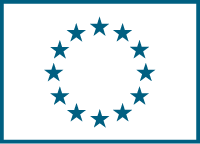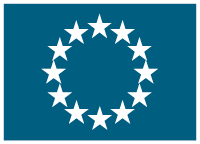Restoration of habitats on sandy soils in southern Sweden
(SandLIFE)
Date du début: 1 août 2012,
Date de fin: 31 juil. 2018
PROJET
TERMINÉ
Background
The project covers 23 Natura 2000 sites distributed on sandy soils in Skane and the neighbouring coastal counties of Halland and Kalmar. The counties have a total population of some 1.75 million people and the sandy-soil habitats are left as living remnants of a traditional lifestyle and historical landscape.
These areas have continued to suffer from the effects of human activities. In the 18th century, most of the woodlands and trees were removed, leading to wind erosion and severe sand drift affecting landscape over a long distance. Many of the forests now growing in these areas were replanted to prevent and remedy that problem.
In more recent times, sandy soils are no longer prioritised for farming since heavier soils are far more productive. The resulting abandonment of sandy-soil areas has led to a continuous invasion of trees, bushes, and tall, dense vegetation - grasses and herbs - along with degradation of flora and fauna. Great efforts are required to restore these habitats, to maintain and develop the environment for species of the dunes and grassland habitats on sandy soils.
Objectives
The overall objective of the project is to restore, maintain and improve biodiversity in 23 Natura 2000 areas on sandy soils in southern Sweden. The project will use already developed methods to restore a âfavourableâ conservation status to a number of Natura 2000 habitat types and ensure positive development for species linked to sandy soils.
Some of the sites consist of a mosaic of habitat types mixed with areas not classified as specific types. These areas, such as plantations of mountain and black pine, may be transferred to other habitat types - such as 2130, 2140, 2180, 2320 or 2330 - through restoration action.
The project will use different methods in combination, to ensure the benefits of restoration remain in the long term. Planning and management schemes will be created to benefit the ecological functions of these areas. Restoration work will include: clearance of woodland; creation of bare sand areas; removal of the invasive Japanese rose (Rosa rugosa); management of encroachment; and management of heather. Further contributing activities will include the organisation of burning events, establishment of fire-breakers and construction of fencing.
The impact of the interventions will be monitored by surveys of habitat structure, inventories of plants, birds and insect species. A survey of socio-economic aspects will also be carried out. The outcome of the project will be disseminated in guidelines for restoration of a range of habitats on sandy soil. Exhibitions and other awareness actions will seek to create acceptance amongst stakeholders and the general public of the need for restoration activity and the fact that it will involve some disturbance.
Expected results
Improved biodiversity on a total area of 3 349 ha at 23 project sites (the total area of the Natura 2000 network site is 55 092 ha);
New areas of target habitat types created and reported;
There will be a particular improvement in the biodiversity of flora, fauna and fungi, especially species that depend on open sand areas;
Specific plans will be produced for all 23 project sites and information passed to landowners, County Administrative Boards and others involved in conservation;
Restoration work on smaller areas will include: woodland clearance (316 ha); creation of bare sand areas (391 ha); management of encroachment (139 ha); removal of the invasive Japanese rose (26 ha); and management of heather (26 ha);
Construction of 59.15 km of fencing, setting of fire-breaks on 36.5 km and organisation of 69 burning events;
12 permanent outdoor exhibitions on the biodiversity of sandy habitats and restoration management;
Publication of a manual of sandy-soil habitat management; and
Specific conservation recommendations that can be implemented all over Europe, both within and outside Natura 2000 areas.




